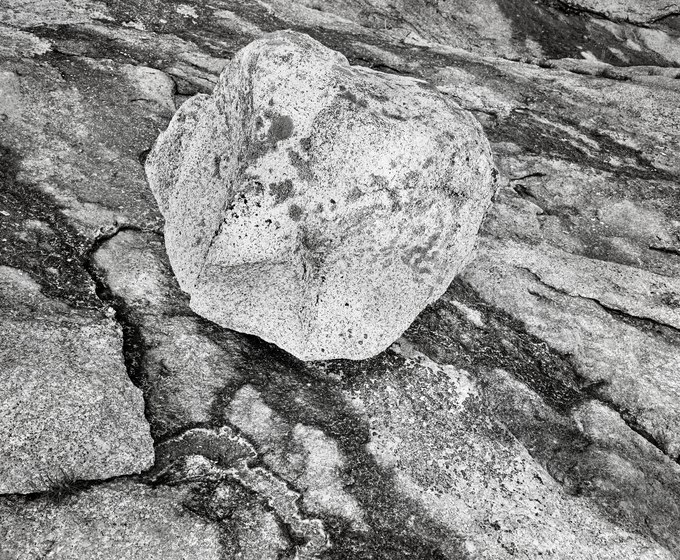A lichen-freckled granite boulder held the evening's fading light. Deposited on a granite bench that rims the shoreline of Deer Isle on Maine's midcoast, it rests uncertainly, transported here by an ancient glacier. When the climate warmed and the weighty ice retreated, the land bulged, fracturing its bedrock. Seeps sprung from cracks in this terrace, leaching minerals, staining its surface, and breaking the bedrock into thin, irregular sheets.
Though the rock terrace and the boulder are both granites, it is apparent that this boulder is a visitor due to its shape and appearance. It arrived via the most recent advance of the Laurentide Ice Sheet, which initially encompassed much of Canada and the northeastern quadrant of the United States almost 100,000 years ago. The glaciers invading present-day New England were thick enough to bury its mountains and push out into the Gulf of Maine until they began to recede 12,000 years ago.
The Latin word for erratic – errare – means "to wander." From where did this itinerant rock originate? Geologists can sometimes identify the home of an erratic by analyzing its mineral makeup and tracking back along the direction of an ice field's movement to the outcrop or bedrock from which it was lifted. This boulder could have traveled as little as a couple of miles or – evidenced by its rounded shape and worn edges – from hundreds of miles away.
- James Baker

